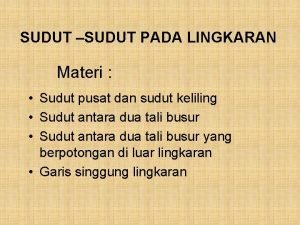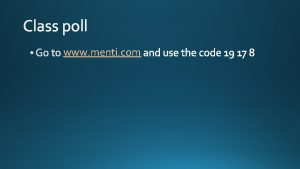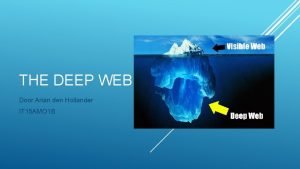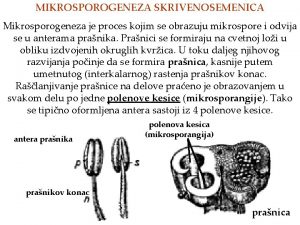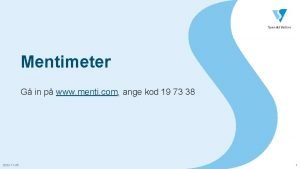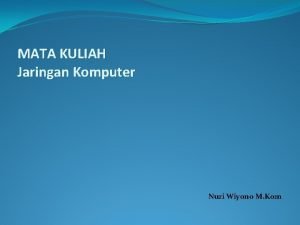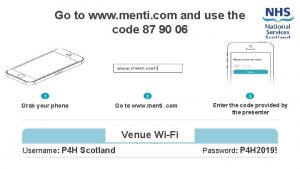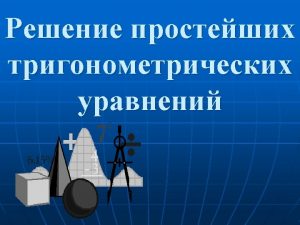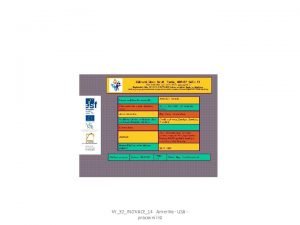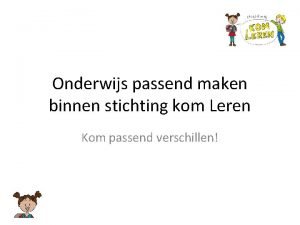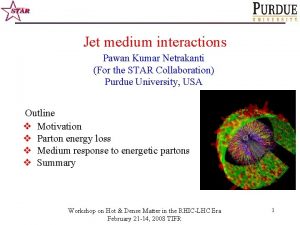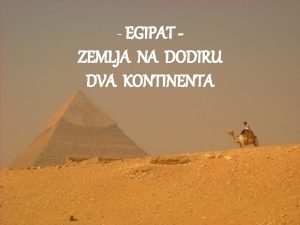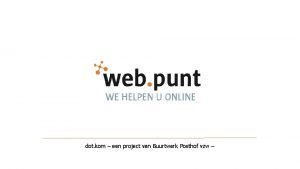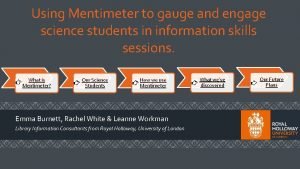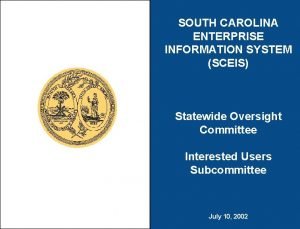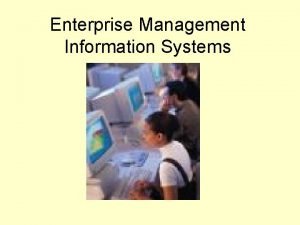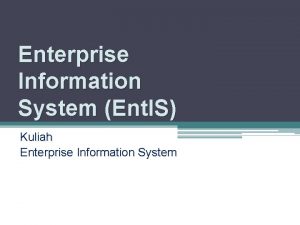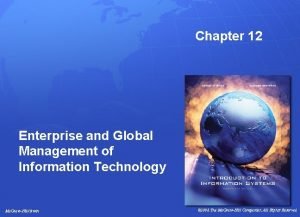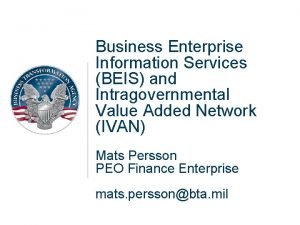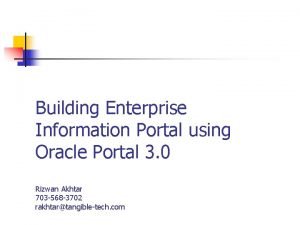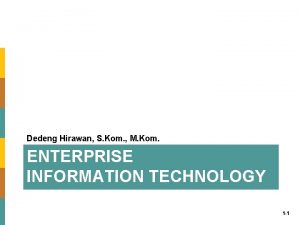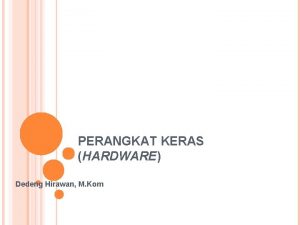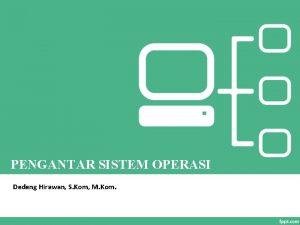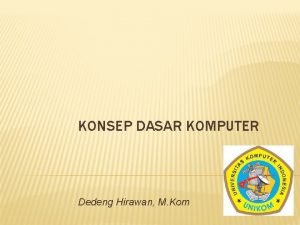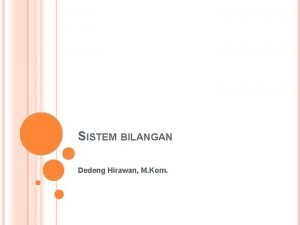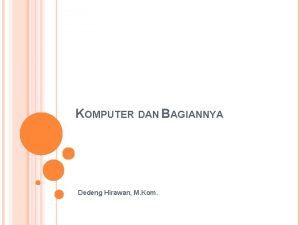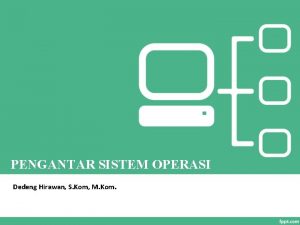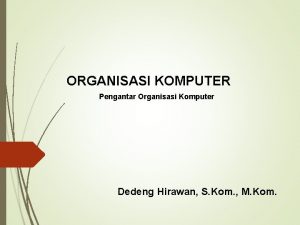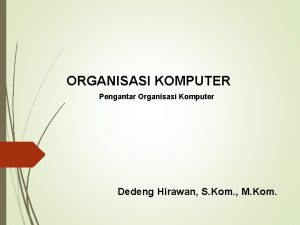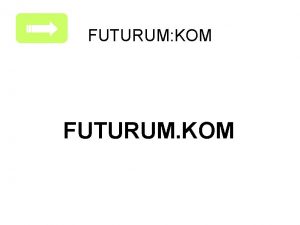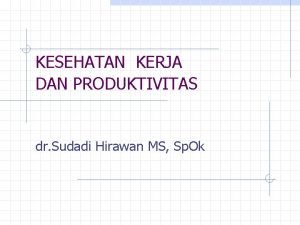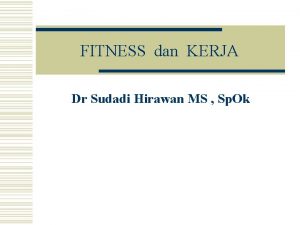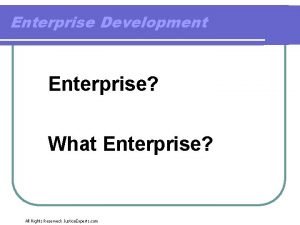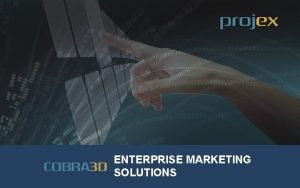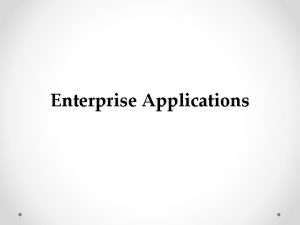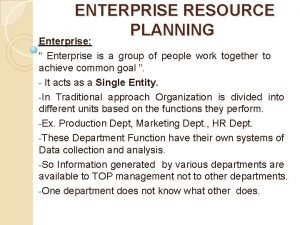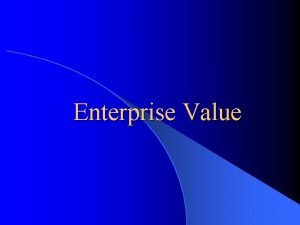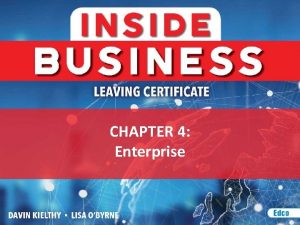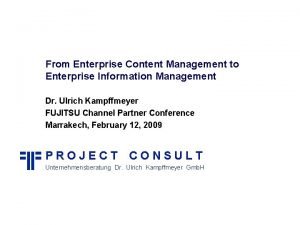Dedeng Hirawan S Kom M Kom ENTERPRISE INFORMATION

































- Slides: 33

Dedeng Hirawan, S. Kom. , M. Kom. ENTERPRISE INFORMATION TECHNOLOGY 1 -1

Enterprise • An organization supporting a defined business scope and mission. • An enterprise includes interdependent resources (PEOPLE, ORGANIZATIONS, TECHNOLOGY) who must coordinate their functions and share information in support of a common mission. 1 -2

Enterprise Category • Profit oriented – Product – Service • Non-profit – Public service 1 -3

Enterprise IT • Computer‐Based technologies to deliver information and functions to the organization for Business Purpose Information System 1 -4

IT’s Role in Enterprise • IT is everywhere in Enterprise / Business 1 -5

IT’s Impact on Business Operations 1 -6

IT’s Impact on Business Operations 1 -7

IT History 1 -8

IT BASICS 1 -9

Information Technology (IT) • IT – a field concerned with the use of technology in managing and processing information • Information technology is an important enabler of business success and innovation 1 -10

IT BASICS • Management information systems (MIS) – a general name for the business function and academic discipline covering the application of people, technologies, and procedures – collectively called information systems – to solve business problems • MIS is a business function, similar to Accounting, Finance, Operations, and Human Resources 1 -11

IT BASICS • When beginning to learn about IT, it is important to understand the following: – Data, information, and business intelligence – IT resources – IT cultures 1 -12

Data, Information, BI • Data - raw facts that describe the characteristic of an event • Information - data converted into a meaningful and useful context • Business Intelligence – applications and technologies that are used together, provide access, and analyze data and information to support decision-making efforts 1 -13

Data, Information, BI 1 -14

Data, Information, BI 1 -15

Data, Information, BI 1 -16

IT Resources • People use • Information technology to work with • Information 1 -17

IT Cultures 1 -18

IT Components 1 -19

IT Components • HARDWARE – Peralatan dari sistem komputer yang secara fisik terlihat dan terjamah • SOFTWARE – Program yang berisi perintah untuk melakukan pengolaahan data • BRAINWARE – Keterlibatan manusia dalam pengembangan 1 -20 dan pengoperasian sistem komputer

IT Components • INFOWARE – User manual, Cyber Law • FIRMWARE – Intruksi yang tersimpan secara permanen di ROM 1 -21

INFORMATION QUALITY 1 -22

Organizational Information • Information is everywhere in an organization • Employees must be able to obtain and analyze the many different levels, formats, and granularities of organizational information to make decisions • Successfully collecting, compiling, sorting, and analyzing information can provide tremendous insight into how an organization is performing 1 -23

Organizational Information • Levels, formats, and granularities of organizational information 1 -24

The Value of Transactional and Analytical Information • Transactional information verses analytical information 1 -25

The Value of Timely Information • Timeliness is an aspect of information that depends on the situation – Real-time information – immediate, up-todate information – Real-time system – provides real-time information in response to query requests 1 -26

The Value of Quality Information • Business decisions are only as good as the quality of the information used to make the decisions • You never want to find yourself using technology to help you make a bad decision faster 1 -27

The Value of Quality Information • Characteristics of high-quality information include: 1 -28

The Value of Quality Information • Low quality information example 1 -29

Understanding the Costs of Poor Information • The four primary sources of low quality information include: 1. Online customers intentionally enter inaccurate information to protect their privacy 2. Information from different systems have different entry standards and formats 3. Call center operators enter abbreviated or erroneous information by accident or to save time 4. Third party and external information contains inconsistencies, inaccuracies, and errors 1 -30

Understanding the Costs of Poor Information • Potential business effects resulting from low quality information include: – Inability to accurately track customers – Difficulty identifying valuable customers – Inability to identify selling opportunities – Marketing to nonexistent customers – Difficulty tracking revenue due to inaccurate invoices – Inability to build strong customer relationships 1 -31

Understanding the Benefits of Good Information • High quality information can significantly improve the chances of making a good decision • Good decisions can directly impact an organization's bottom line 1 -32

1 -33
 Kom heer jezus kom
Kom heer jezus kom Putting the enterprise into the enterprise system
Putting the enterprise into the enterprise system Putting the enterprise into the enterprise system
Putting the enterprise into the enterprise system Sudut-sudut pada lingkaran
Sudut-sudut pada lingkaran Lief vrouwke ik kom niet om te bidden tekst
Lief vrouwke ik kom niet om te bidden tekst Menticom
Menticom Hoe kom je op het dark web
Hoe kom je op het dark web Kom tot rus
Kom tot rus Mikrosporogeneza
Mikrosporogeneza Www.menti.,com
Www.menti.,com Subnet class b ditunjukan dengan
Subnet class b ditunjukan dengan Wwwmenti.come
Wwwmenti.come Dubai se nalazi na kontinentu
Dubai se nalazi na kontinentu Sinta swastikawara, m.i.kom
Sinta swastikawara, m.i.kom Po kom je pojmenována amerika
Po kom je pojmenována amerika Sistem informasi geografis ahmat adil, s.kom., m.sc.
Sistem informasi geografis ahmat adil, s.kom., m.sc. Kom til mig alle i som er trætte
Kom til mig alle i som er trætte Www-menti-com
Www-menti-com Maciej aleksy dawidowski basia
Maciej aleksy dawidowski basia Veelvoudige sin
Veelvoudige sin Majesteit glansryke heerlikheid
Majesteit glansryke heerlikheid Stichting kom leren
Stichting kom leren Kumar kom jet
Kumar kom jet Kom hitt
Kom hitt Gde se nalazi egipat
Gde se nalazi egipat Webpunt permeke
Webpunt permeke Menti dot kom
Menti dot kom Rit my courses
Rit my courses Sc enterprise information system
Sc enterprise information system Enterprise management system
Enterprise management system Mata raisyuu
Mata raisyuu Global information technology management
Global information technology management Bi beis
Bi beis Enterprise information portal login page
Enterprise information portal login page



